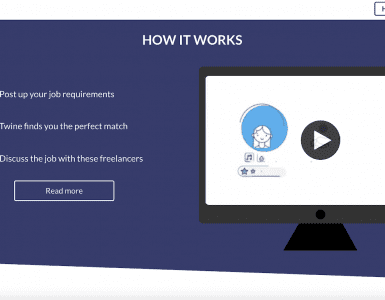So you want to hire a freelancer? But you don’t want one who’s going to make a total mess of your project, right? Here’s our guide on hiring the right freelancer for your job so you’re not left high and dry when deadline day arrives.
Know what you want
Before you even start the process of hiring, sit down and brainstorm your ideas. What needs do you have and what gaps does a freelancer need to fill? Once you’ve figured out these broader questions, fine tune and work out the precise details of the project – its scope, the deadline, the skills and experience you need a freelancer to bring to the table.
Half of the problems people have with freelancers happen because they neglect this step. It’s hard to get the right freelancer if you have no idea what the right freelancer looks like. Plus, the best freelancers are going to be turned off by a vague client and unclear project brief. So taking this time means you can spell out what you need, so they know if they can provide it.
Where to look
There are many many ways to find a freelancer. As well as the more traditional routes, there’s lots of freelance sites out there offering you access to talented freelancers with the click of a button. This is great, especially if you don’t mind working with someone remotely. But if you need someone nearby, it might be best to post your brief on more general job sites. Or even go really old school and ring people! With the internet, you’re pretty spoiled for choice. The problem is really narrowing down the selection so you find the right freelancer!
Get the project brief right
Your project brief will be the first reference point and is crucial in attracting the right freelancer. Remember that the freelancer is an outsider; they simply don’t know your business like you do. So you need to break things down clearly. Here are some things to include:
- Who are you? Who’s your audience? Give a quick overview of you or your company. It doesn’t have to be long, but it’s important if you want your values and aims to be reflected in the project.
- What’s your budget? Different freelancers have different rates. If it’s too low, they’re probably not interested. It can also (weirdly) be too high for them if they’re inexperienced. A high budget often suggests you’re looking for a more experienced freelancer.
- What’s the timeline? The freelancer needs to know if it will fit into their current workflow. Again, putting this in the brief saves you both time.
- Make the scope of the project clear. Spell out exactly what you need doing. Saying you need a “graphic designer” with no other details isn’t a great deal of use to anyone!
Read our article for more tips on writing that perfect brief.
If you get this right the pitches will come flooding in. So how do you narrow down the right freelancer from there?
Check the pitch quality
Just as you’ve spent time on your project brief, you want a freelancer who’s spent time carefully putting a pitch together. The right freelancer will treat it like a job application. If it’s rushed and vague, that might be a red flag that they’re not right for the project and could be difficult to work with. You want it to be a professional relationship on both sides.
Look at their work
Take a look at their portfolio and work they’ve done for past clients. If their work looks like it’s been done by a two year old, but you’re looking for a high-end, polished logo, they’re probably not the right freelancer for you.
But quality isn’t the only thing you need to pay attention to. See if they’ve done similar projects before, so you know they’ve got experience. For art and design work, check that they work in the style you want too. There’s a big difference between vector art and traditional oil paintings! Similar rules apply to music too – it’s probably not the best decision to hire a triphop producer for your heavy metal album.
Saying that, don’t rule out newbies straight away. Just because they haven’t done something exactly like your project before doesn’t mean they don’t have buckets of talent to offer.
Ratings, references & testimonials
If you can, get the contact details of past clients and get in touch with them for a reference. Make sure you have the freelancer’s permission to do this first.
You can also check their personal website, as often they’ll have a testimonials section where clients can leave comments. Similarly, a lot of freelance websites will have rating systems in place that are worth taking a look at.
Talk to them
Whether it’s an interview or an informal chat over Skype, this is obviously the best way to get a real sense of a person. It also means you can go through the project in more depth and preempt any issues that could pop up further down the road.
Practical considerations
If you want someone local, the right freelancer – no matter how perfect otherwise – isn’t one who’s thousands of miles away. Consider if time zones will be an issue with communication – an hour or two won’t make a huge difference, but twelve might! Will you be alright with phone calls at antisocial hours? If you choose to work with someone remotely, remember to take possible language barriers into account.
The right freelancer isn’t always the cheapest
It can be easy to fall for undercutting or cheap rates. But often, a freelancer’s rates will reflect the quality of their work! Be willing to pay more for the right freelancer. After all, it’s great to work however you want!






